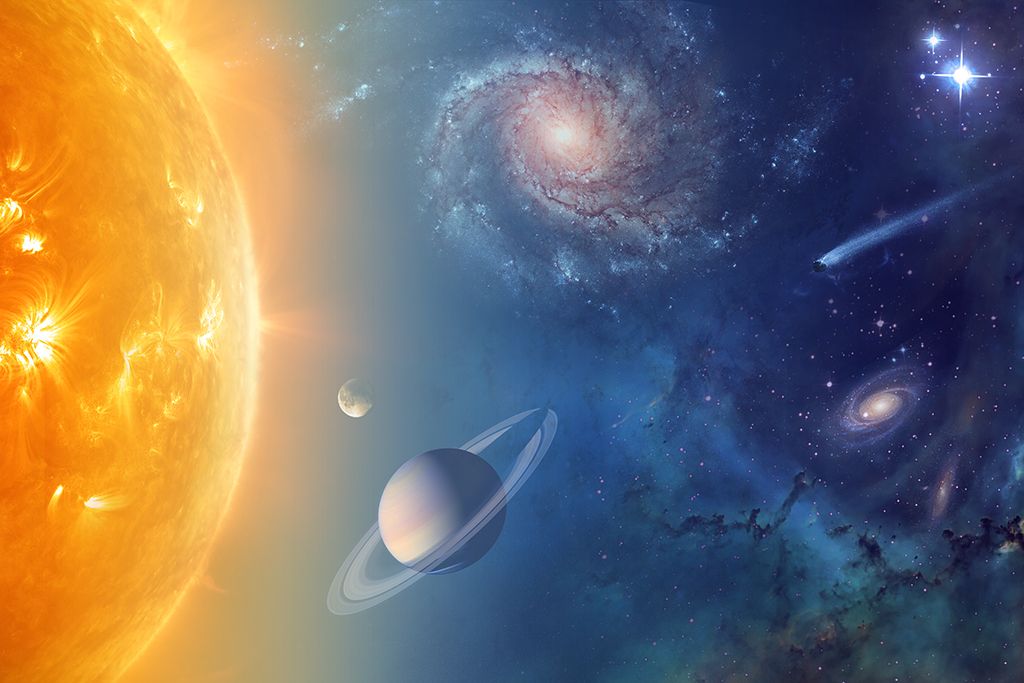
Humanity is on the verge of discovering alien life, high-ranking NASA scientists say.
"I think we're going to have strong indications of life beyond Earth within a decade, and I think we're going to have definitive evidence within 20 to 30 years," NASA chief scientist Ellen Stofan said Tuesday (April 7) during a panel discussion that focused on the space agency's efforts to search for habitable worlds and alien life.
"We know where to look. We know how to look," Stofan added during the event, which was webcast live. "In most cases we have the technology, and we're on a path to implementing it. And so I think we're definitely on the road." [5 Bold Claims of Alien Life]
Former astronaut John Grunsfeld, associate administrator for NASA's Science Mission Directorate, shared Stofan's optimism, predicting that signs of life will be found relatively soon both in our own solar system and beyond.
"I think we're one generation away in our solar system, whether it's on an icy moon or on Mars, and one generation [away] on a planet around a nearby star," Grunsfeld said during Tuesday's event.
Many habitable environments
Recent discoveries suggest that the solar system and broader Milky Way galaxy teem with environments that could support life as we know it, Grunsfeld said.
For example, oceans of liquid water slosh beneath the icy shells of the Jupiter moons Europa and Ganymede, as well as that of the Saturn satellite Enceladus. Oceans covered much of Mars in the ancient past, and seasonal dark streaks observed on the Red Planet's surface today may be caused by salty flowing water.
Sign up for the Live Science daily newsletter now
Get the world’s most fascinating discoveries delivered straight to your inbox.
Further, NASA's Curiosity rover has found carbon-containing organic molecules and "fixed" nitrogen, basic ingredients necessary for Earth-like life, on the Martian surface.
Farther afield, observations by NASA's Kepler space telescope suggest that nearly every star in the sky hosts planets — and many of these worlds may be habitable. Indeed, Kepler's work has shown that rocky worlds like Earth and Mars are probably more common throughout the galaxy than gas giants such as Saturn and Jupiter.
And just as the solar system is awash in water, so is the greater galaxy, said Paul Hertz, director of NASA's Astrophysics Division.
The Milky Way is "a soggy place," Hertz said during Tuesday's event. "We can see water in the interstellar clouds from which planetary systems and stellar systems form. We can see water in the disks of debris that are going to become planetary systems around other stars, and we can even see comets being dissipated in other solar systems as [their] star evaporates them." [6 Most Likely Places for Alien Life in the Solar System]
Looking for life
Hunting for evidence of alien life is a much trickier proposition than identifying potentially habitable environments. But researchers are working steadily toward that more involved and ambitious goal, Stofan and others said.
For example, the agency's next Mars rover, scheduled to launch in 2020, will search for signs of past life and cache samples for a possible return to Earth for analysis. NASA also aims to land astronauts on Mars in the 2030s — a step Stofan regards as key to the search for Mars life.
"I'm a field geologist; I go out and break open rocks and look for fossils," Stofan said. "Those are hard to find. So I have a bias that it's eventually going to take humans on the surface of Mars — field geologists, astrobiologists, chemists — actually out there looking for that good evidence of life that we can bring back to Earth for all the scientists to argue about."
NASA is also planning out a mission to Europa, which may launch as early as 2022. The main goal of this $2.1 billion mission will be to shed light on the icy moon's potential habitability, but it could also search for signs of alien life: Agency officials are considering ways to sample and study the plumes of water vapor that apparently erupt from Europa's south polar region.
In the exoplanet realm, the agency's James Webb Space Telescope (JWST), an $8.8 billion instrument scheduled to launch in 2018, will scope out the atmospheres of nearby "super-Earth" alien planets, looking for gases that may have been produced by life.
JWST will scan the starlight that passes through the air of super-Earths, which are more massive than our own planet but significantly less so than gaseous worlds such as Uranus and Neptune. This method, called transit spectroscopy, will likely not work for potentially habitable Earth-size worlds, Hertz said.
Searching for biosignature gases on small, rocky exoplanets will instead probably require direct imaging of these worlds, using a "coronagraph" to block out the overwhelming glare of their parent stars, Hertz added.
NASA's potential Wide-Field Infrared Survey Telescope, which may launch in the mid-2020s if given the official go-ahead, would include a coronagraph for exoplanet observations.
Follow Mike Wall on Twitter @michaeldwall and Google+. Follow us @Spacedotcom, Facebook or Google+. Originally published on Space.com.












